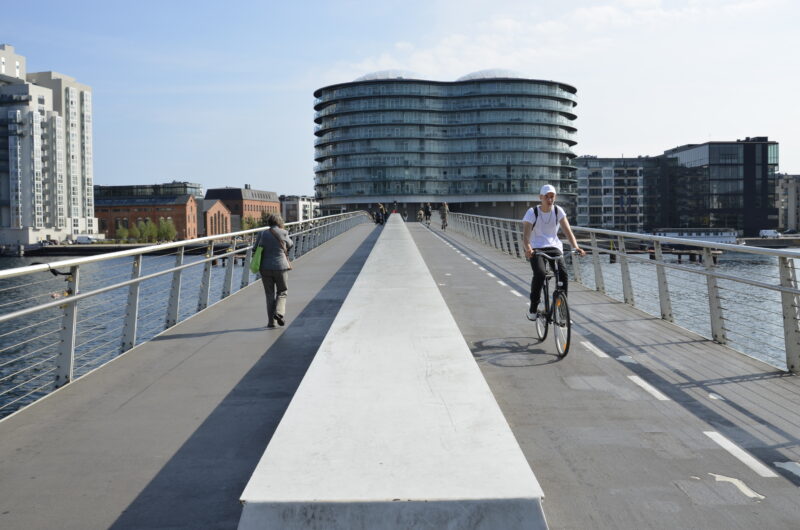The Capital Region is intent on becoming a green, innovative metropolis with high growth and excellent quality of life. Bicycles have a key role to play here, as the many cyclists create better urban environments with a more sociable way of life, cleaner air and less noise. This is why the City of Copenhagen, the Capital Region and the outlying municipalities are working individually and jointly to improve conditions for cyclists.
Cycling initiatives throughout the Region
Across large swathes of the Capital Region, the network of cycle paths, cycle bridges and super-cycle paths is being expanded to provide long, continuous cycling links where people can ride at their own pace.
More and better bicycle parking facilities are being provided at stations and elsewhere, and the Region has joined forces with eight municipalities and eight hospitals to promote the “Test an electric bicycle” campaign, designed to tempt commuting motorists to leave the car at home and switch to an electric bicycle.
Cyclists have fewer sick days
The cycling accounts indicate that 30 per cent of all commuter journeys in the Capital Region are undertaken by bicycle. The climate and the environment are not the only winners here. For every 1,200 km cycled, the average number of sick days falls by one day.
That means a total of one million fewer sick days per year. And there is scope for even more cycling.
The Region and the municipalities are hard at work establishing 28 super-cycle paths, as well as improving local and regional cycle paths. Once the super-cycle paths are in place, calculations indicate that a further 34,000 sick days per year could be saved.











